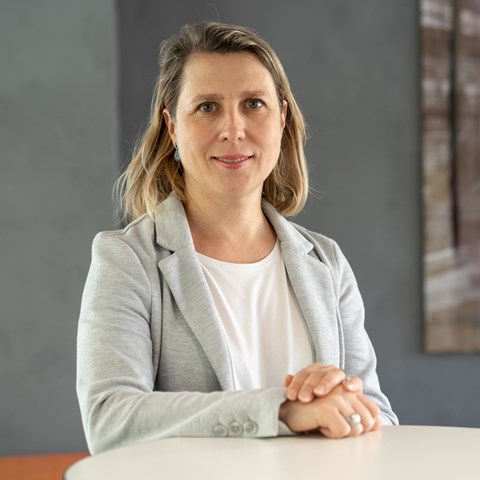Facts:
Ekaterina Krivonos is the Chief for Latin America and the Caribbean Service in the FAO Investment Centre. She has over 20 years of experience in analysis and policy advisory on agricultural trade and commodity markets.

Ekaterina Krivonos, Chief for Latin America and the Caribbean Service in the FAO Investment Centre, shares her thoughts about sustainable food systems.
1. How does your ideal sustainable food system look like in the context of your country/region of expertise?
I do not think there is one ideal sustainable food system. It is very context-specific. In each country where FAO operates, there are particular challenges. The solutions will very much depend on where the gaps are, what we have at our disposal as tools and capacities and people who are willing to make a change. The first step is always to look at the conditions under which we operate, where the priorities are and where we actually can make a change. I do not think it is very constructive to start by saying that we want to change everything that does not working or is not ideal. That is not how the world operates.
We have to look at incremental changes and bring people to the table who can make a real difference. Whether it is policy maker, companies, farm organizations or women's groups, we have to find the people who can actually make a difference and work together.
From a FAO side, we bring technical advice, policy analysis, and analytical work in many areas that are relevant to food systems. It could be forestry, agriculture, fisheries. From the FAO Investment Center, where I work, we can also bring connection to investments. As a multidisciplinary team we can bring a lot of knowledge and experience to make investment projects more impactful.
2. Can you share with us your experience of supporting changes/ transitions towards sustainable food systems in a country/region?
I would like to give two examples. One is through my previous work in the FAO regional office for Latin America and the Caribbean. I have been working on a small project in Chile in an area that was subject to a lot of natural resource degradation, due to droughts and suffering after an earthquake. There where farmers that were growing horticulture and were disconnected in the sense that they lived in very remote areas, not well connected to towns or cities. They were already struggling with access to basic services, water, and then eventually to also sell their production.
In the same area, we also worked with fishermen to develop activities that would help them to be more sustainable and to increase their incomes. The key to success in this case was finding the local people, local extension services, and people working in the municipality of this region who were very much committed to implementing programs. But also to find new ways of working, and setting up working groups with farmers and fishermen. One specific thing that we did was to establish a local market that was operating every Sunday after church. In this market, people could bring their produce to sell. And as far as I know, it is still functioning. So, even though it was a small progress in the grand scale of things, it gave farmers an outlet for their food.
Another example is a new project in Colombia within the SASI project, where we are working towards sustainable food systems at the territorial level and at the national level to support the national agroecology policy and programme. Here is a need to strengthen both the technical capacities, but also operationalize the policy in a more concrete way with financing mechanisms identified. This is how we think we can contribute to the transition to sustainable food systems.
3. In your view, what are the key triggers and success factors for change to happen?
A good evidence base and solid knowledge are crucial. We have to come prepared, both as FAO and together with the stakeholders, to have solid evidence and scientific proof of what concepts work in which context. It can be technological innovations, social innovations, economic analysis or data.
The second point is to find the champions. As for the work I mentioned in Chile, these champions were really the very committed technical officers in the municipalities who were responsible for agriculture. They brought consistency and passion together with available instruments like, for example, small grants and extension services to farmers.
The third point is maybe to be honest upfront when we work with communities, because in the end, this is a participatory approach that requires people's commitment, time and energy. We have to be honest with them, what they can expect, and what they are working towards. We need to have a very clear goal for any given project, no matter how small or big, on what can be achieved. So they really understand the consequences and can be providing the input under the understanding whether it is a technical assistance or investment or research project. It is important to have a clear end of the project and whether or not it is sustainable, whether it links to other operations in the region or investment projects or how policy changes will be, what kind of policy changes will come out of this work.
This interview was made by Rodrigo Luna, ICRA Colombia, at the Science Policy Lab in Malmö on June 18-19, 2024.
Ekaterina Krivonos is the Chief for Latin America and the Caribbean Service in the FAO Investment Centre. She has over 20 years of experience in analysis and policy advisory on agricultural trade and commodity markets.